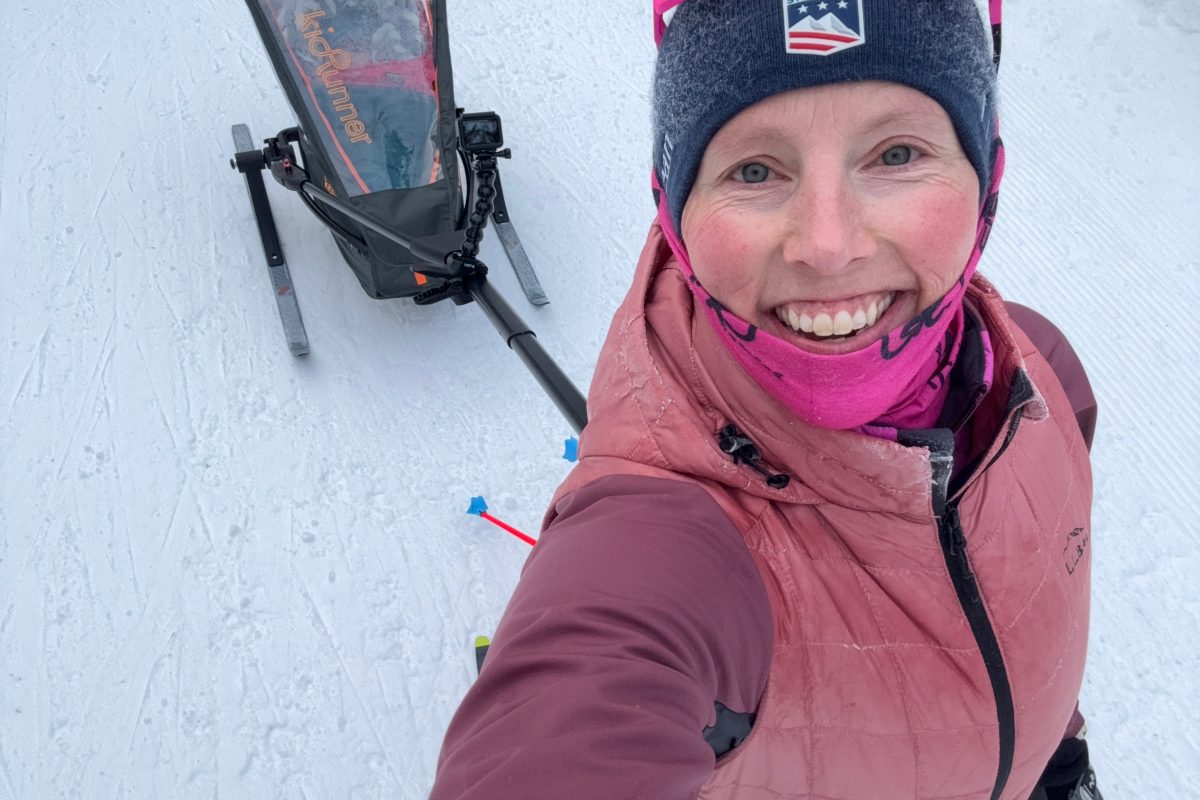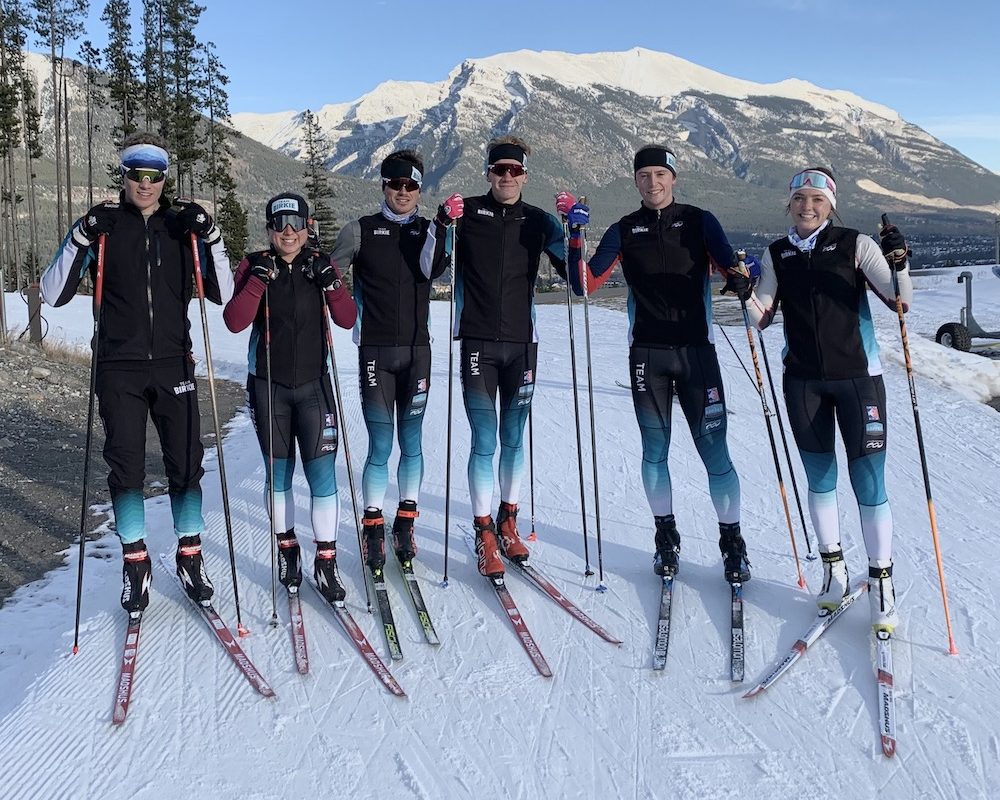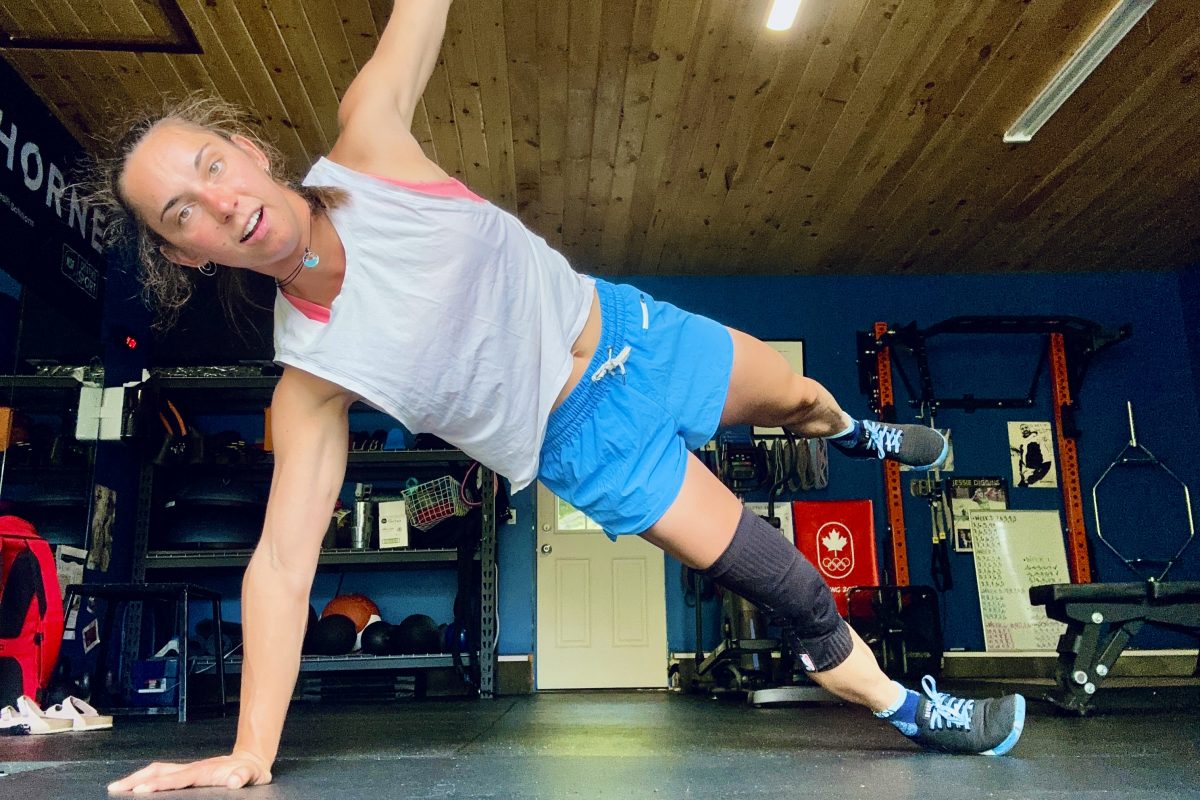About
This Column:
Lets get started… This column is meant to give our readers training
and racing ideas to help them prepare for the upcoming race season. Both
Gordon Lange and I have coached skiers for many years. Last summer we
decided to start working out together and be a little more systematic
and goal-oriented with our own training. Since we had coached together
in the past and had spent years discussing and sharing ideas on training,
we knew we would have little problem agreeing upon what to do. We ended
up doing from two to four workouts per week together and we were both
pretty pleased with our results this past winter.
Based on these
race results, we are inspired to see if we can continue to make progress.
Gordon and I invite those of you in need of ideas and inspiration to join
us. We will share the details of our training throughout the year, including
general descriptions of our important workouts and training concepts.
It would be a little too time consuming to explain everything we are doing
and why we are doing certain workouts. For more extensive training theory
and explanations of the training terminology, please see How to, When
to, Why to…a Norwegian Model Training Guide and Programs available from
Nordic Equipment. In fact, this book is a must-have if you have not studied
cross country skiing like we have. I should also warn inexperienced racers
that we are both pretty hard-core when it comes to hard workouts and challenges,
and would therefore suggest that many may not want to copy our workouts
exactly. A little moderation may be necessary.
 Gordon
Gordon
Lange (age 44)
ð Former US Ski team and University of Wyoming head coach.
ð Three time U.S. Olympic coach.
ð Currently coaching Nordic Combined skiers in Park City, Utah. His
skiers won the team competition and took first and second at the 2001
Nordic Combined Junior Nationals.
Gordon's
best results the 2001 season:
ð On the winning two-person relay team (w/Torbjorn) at Masters Nationals
in Sugarloaf, ME. The team beat all teams regardless of age.
ð Gordon also posted the fastest skate time of the day at Masters
Nationals (15 kilometer skate), regardless of age group.
ð Won his age group and placed fifth overall at The Great Race in
California.
Strengths:
Good in both skate and classic technique and has a very low percent
body fat.
Weaknesses:
Knows that Torbjorn has a great finish kick and also had to draft Torbjorn
home from midway in a 100-kilometer bike workout last fall. At the end
of the season he was also reminded several times that he did not do the
Birkie (by Torbjorn) and that you are not a real cross country skier unless
you have done that race.
 Torbjorn
Torbjorn
Karlsen (age 44)
Torbjorn studied cross-country skiing at the Norwegian Sport College of
Oslo, Norway. He holds the highest coaching degree available in Norway
and is a former US Ski Team and two time's Olympic coach. He has coached
skiers to more than 40 US National Championship titles and is currently
coaching Becky Scott of Canada and US National Team member Justin Wadsworth.
Becky and Justin both had great seasons. Becky captured a 3rd and a 4th
place at the Soldier Hollow World Cup in January World Cup and Justin
skied in to a great 8th place in the 30 kilometer freestyle at the same
event. This marked the best North American results in a decade.
Torbjorns
best results the 2001 season:
ð Skied with Gordon on the winning relay team at US masters Nationals
ð 2nd in the 30 kilometer classic and 2nd in the 15 km pursuit at
the same event.
ð 3rd place overall in a 10K classic race in Park City beaten only
by Olympian John Aalberg and top nationally ranked Cory Smith.
ð 70th overall at this years Birkie (his first ever race over 50
km)
Strengths:
Good sprinter and has been on the fastest relay team at Masters Nationals
three years in a row. This can not be a fluke! He is very comfortable
with both classic and skating.
Weakness:
Knows that Gordon is only 145 lb against his own 165lb at the same height
5' 11". Psychologically this is hard to deal with when you have hilly
terrain and soft conditions.
Last year's
training: Most of our training weeks last year varied between 5 –
11 hours. We started in April and were pretty consistent throughout the
summer. However, not much systematic interval training was done before
July. Instead we did a number of hard, less-systematic efforts on road
and mountain bikes. Attempting to do early summer interval training on
foot resulted in long-term calf and Achilles-tendon injuries and leg problems
for me, and less-serious leg problems for Gordon as well. Because of these
injuries, a much higher percent of our distance training was done as biking
than what we had originally planned. In fact, running was not a part of
the routine again for me until well into September. I also experienced
problems with a broken hand (I broke a bone in the fall of 1999). As a
result, most rollerskiing was reduced to skating without poles. Fortunately,
Gordon was a good sport and went along with this. Skating without poles
on rollerskis actually turned out really well for both of us. We have
lots of long uphills nearby and did one or two no-pole sessions per week.
It really improved our leg strength. More details about this type of training
will be provided when we start doing it again this summer. We
both like to compete, and we'll often just compete against each other.
Quite a few short (15-20 minute) uphill bike time trials and some on-foot
hill climbs were used in the summer and fall in order to stimulate and
enhance racing skills. In addition to these time-trial workouts, our summer
training included more standard interval workouts and plenty of distance
training.



